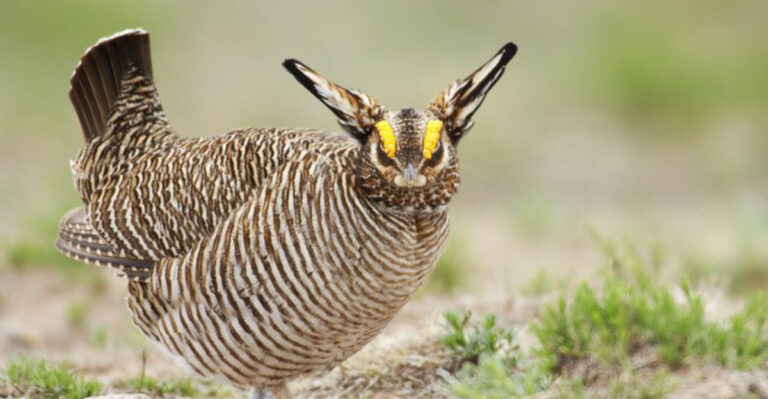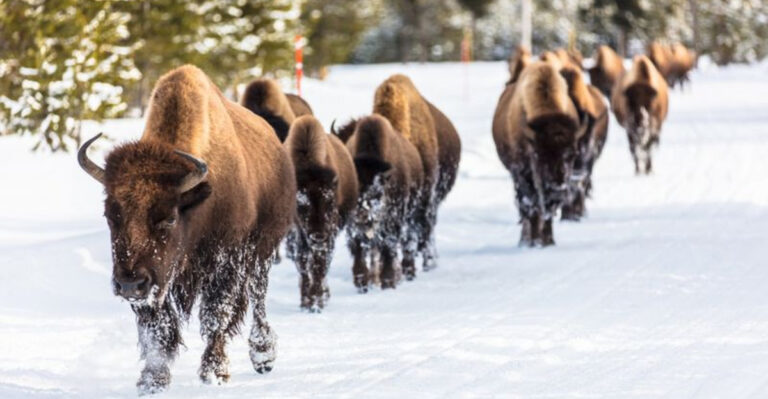8,000-Pound Sloths Once Roamed North America But Where’d They Go?
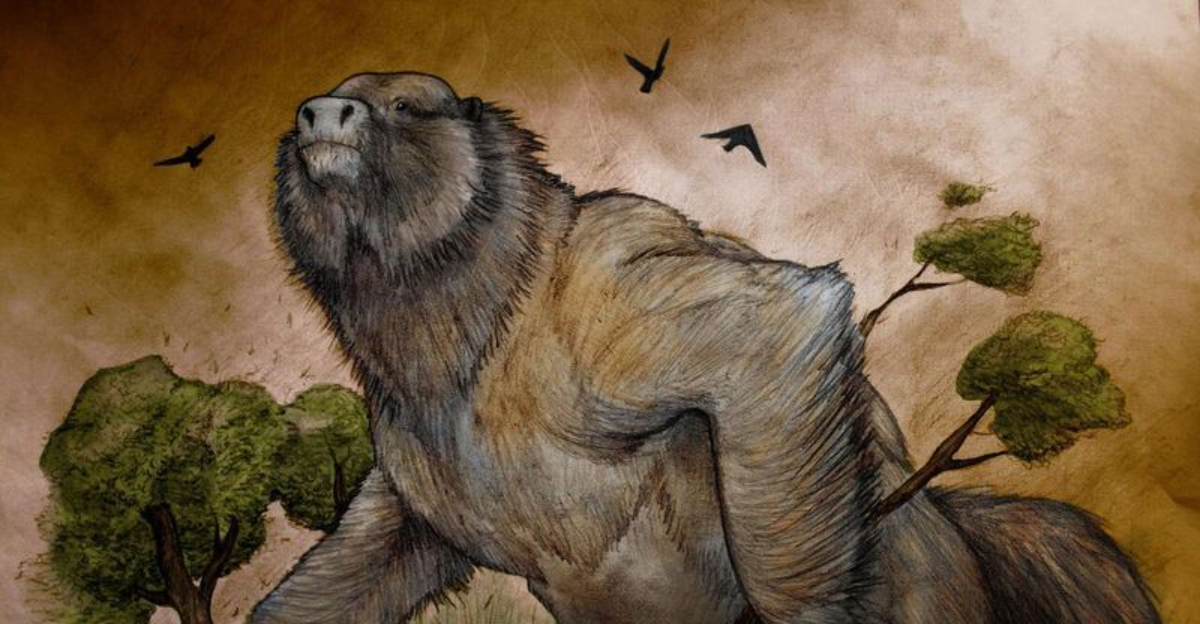
Imagine a creature as heavy as a pickup truck but moving with the slowness of today’s tree sloths. Giant ground sloths weren’t just big—they were massive beasts that wandered across North America thousands of years ago.
These prehistoric giants vanished mysteriously, leaving behind only bones and questions about what happened to these amazing animals.
The Giant Ground Sloths That Once Roamed North America
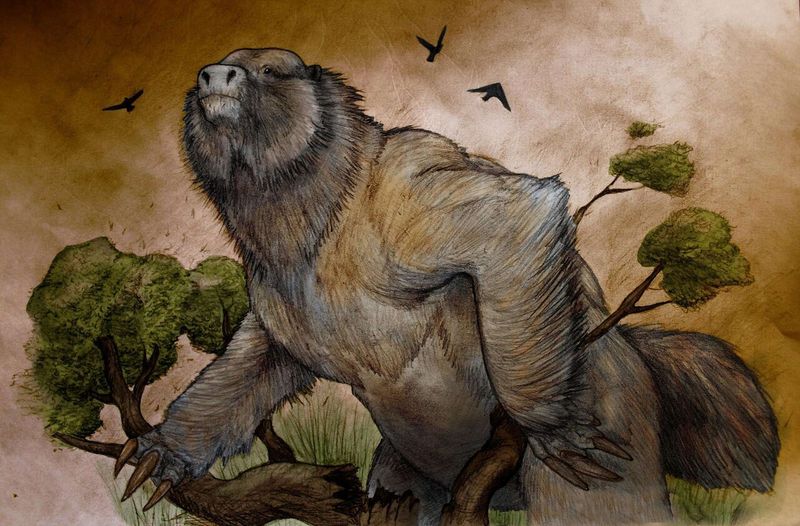
Towering at heights of up to 20 feet, these ancient behemoths belonged to the Megalonyx and Eremotherium families.
They lumbered across the continent from Alaska to Mexico during the Pleistocene epoch, roughly 2.5 million to 11,000 years ago.
Unlike their modern tree-dwelling cousins, these giants walked on four legs but could rear up on their hind legs to reach tasty vegetation.
How Big Were The 8,000-Pound Sloths?
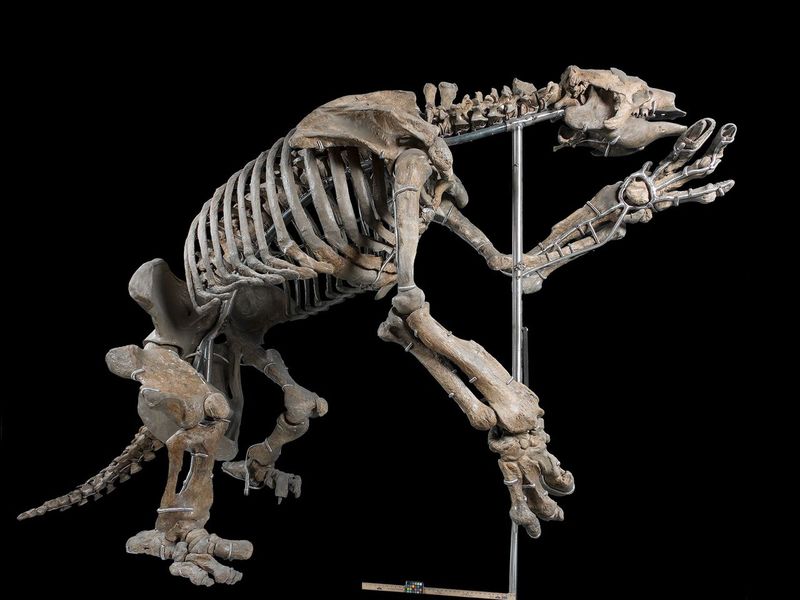
Weighing up to four tons, these colossal creatures dwarfed modern elephants in mass.
Their skeletons reveal massive claws—some nearly a foot long—that served not as weapons but as tools for gathering plants and digging.
A ground sloth’s skull alone could measure two feet in length, housing powerful jaw muscles that helped them process tough vegetation.
The Habitats And Environments Of Prehistoric Sloths
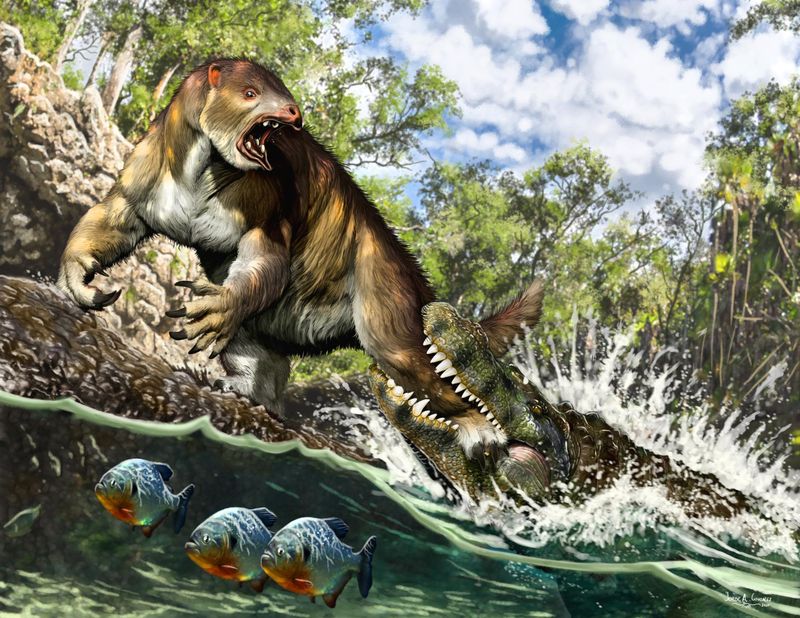
From steamy swamps to chilly grasslands, these adaptable giants thrived across diverse North American ecosystems.
Fossil evidence shows they wandered through what’s now Florida’s wetlands, California’s coastlines, and even the high plateaus of Mexico.
Some species preferred forested regions while others adapted to more open terrain, showing remarkable flexibility for such specialized creatures.
What Did Giant Ground Sloths Eat?
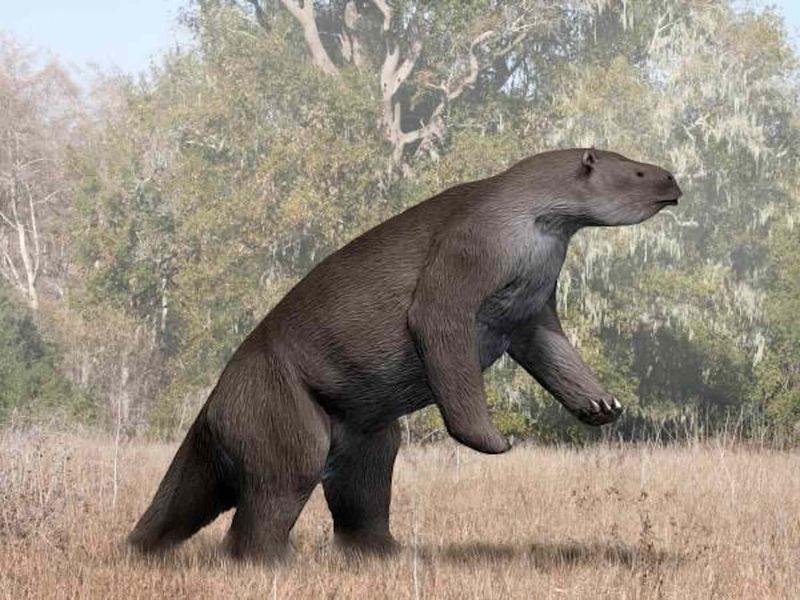
Morning meals for these prehistoric vegetarians likely included leafy branches torn from trees with their powerful front limbs.
Microscopic plant remains found in their fossilized dung and teeth reveal diets rich in grasses, shrubs, and even cacti in desert-dwelling species.
Scientists believe they served as nature’s landscapers, helping shape ancient forests through their massive appetites.
The Role Of Size And Strength In Their Survival
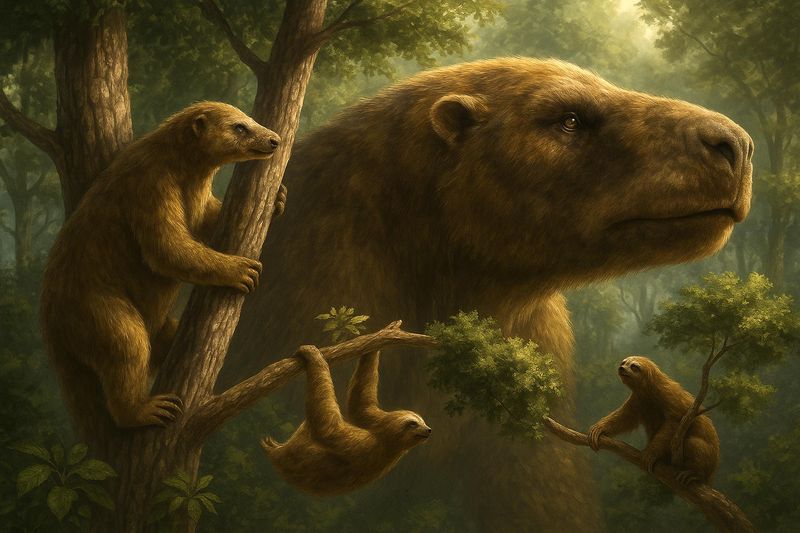
Sheer massiveness protected adult ground sloths from most predators, including dire wolves and saber-toothed cats that roamed the same territories.
Their thick hides, potentially covered with embedded bony nodules called osteoderms, acted like natural armor against attacks.
While slow-moving, their incredible strength allowed them to defend themselves with sweeping motions of their clawed forelimbs.
Theories Behind The Extinction Of Giant Ground Sloths
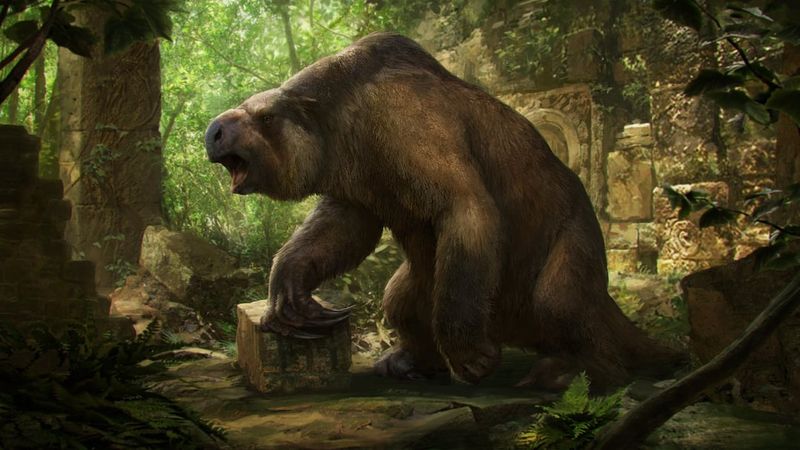
Around 11,000 years ago, these magnificent creatures disappeared forever from North America’s landscapes.
Scientists debate whether a perfect storm of challenges—including rapid climate shifts, new diseases, and human hunters—delivered the final blow.
Some evidence suggests smaller populations survived on remote Caribbean islands until just 4,500 years ago, long after their mainland relatives vanished.
Climate Change And Its Impact On Giant Sloths
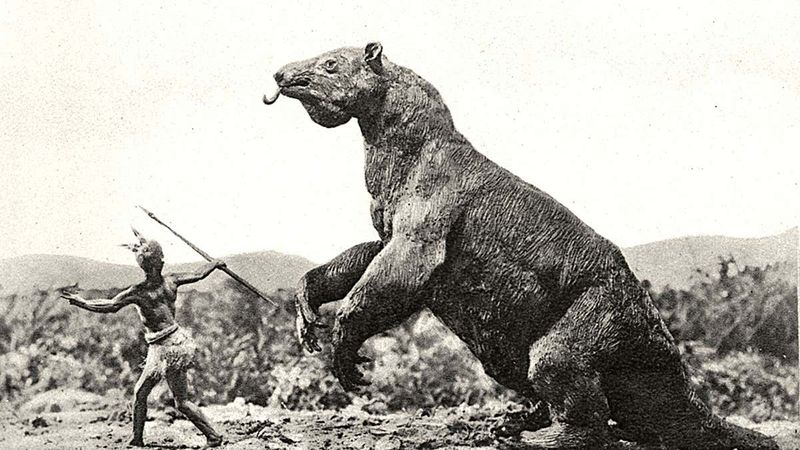
Warming temperatures after the last ice age transformed vast grasslands into forests, dramatically altering food availability for specialized herbivores.
Fresh research indicates ground sloths struggled to adapt their diets quickly enough as favorite plants disappeared from their territories.
Pollen records show major vegetation shifts coinciding precisely with sloth population declines, suggesting these climate refugees simply ran out of suitable habitat.
Human Interaction And Its Possible Role In Sloth Extinction
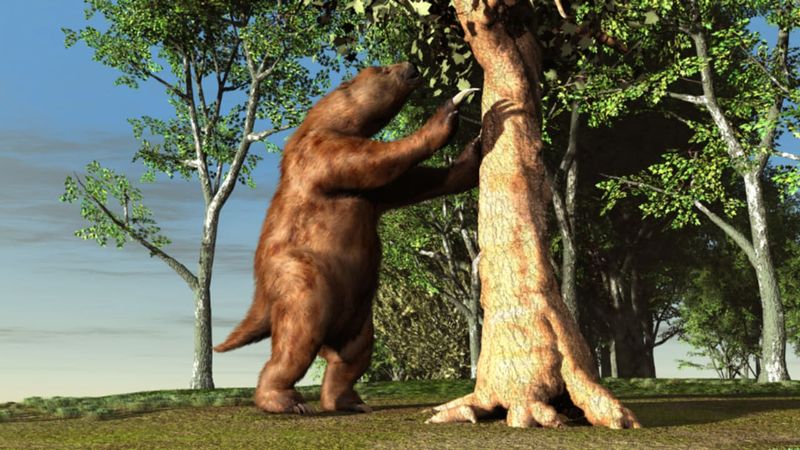
Cave paintings and butchered bones tell a fascinating story of early human encounters with these gentle giants.
Hunting pressure from newly-arrived Clovis people may have pushed already-stressed sloth populations past their breaking point.
Some archaeological sites feature sloth remains with telltale cut marks from stone tools, suggesting our ancestors occasionally made meals of these massive creatures.
What Fossil Evidence Tells Us About Sloth Extinction
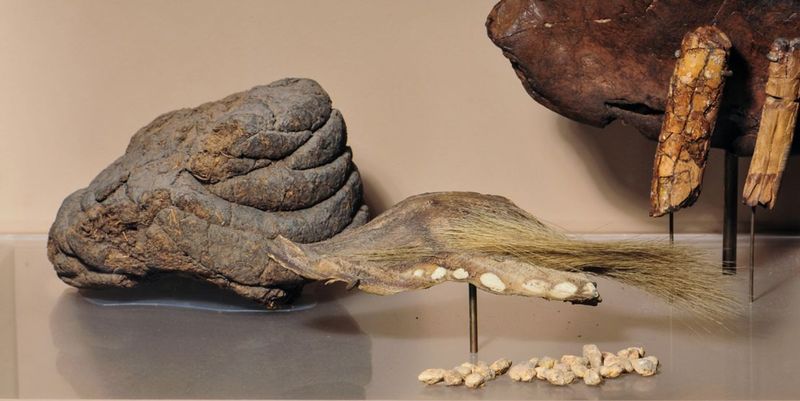
Fossilized dung deposits, called coprolites, preserve final clues about ground sloth diets and health before they disappeared.
Recent radiocarbon dating of bones shows their extinction wasn’t instantaneous but occurred in waves across different regions.
DNA extracted from well-preserved remains helps scientists understand how these animals responded to changing conditions, revealing they had surprisingly low genetic diversity toward the end.

